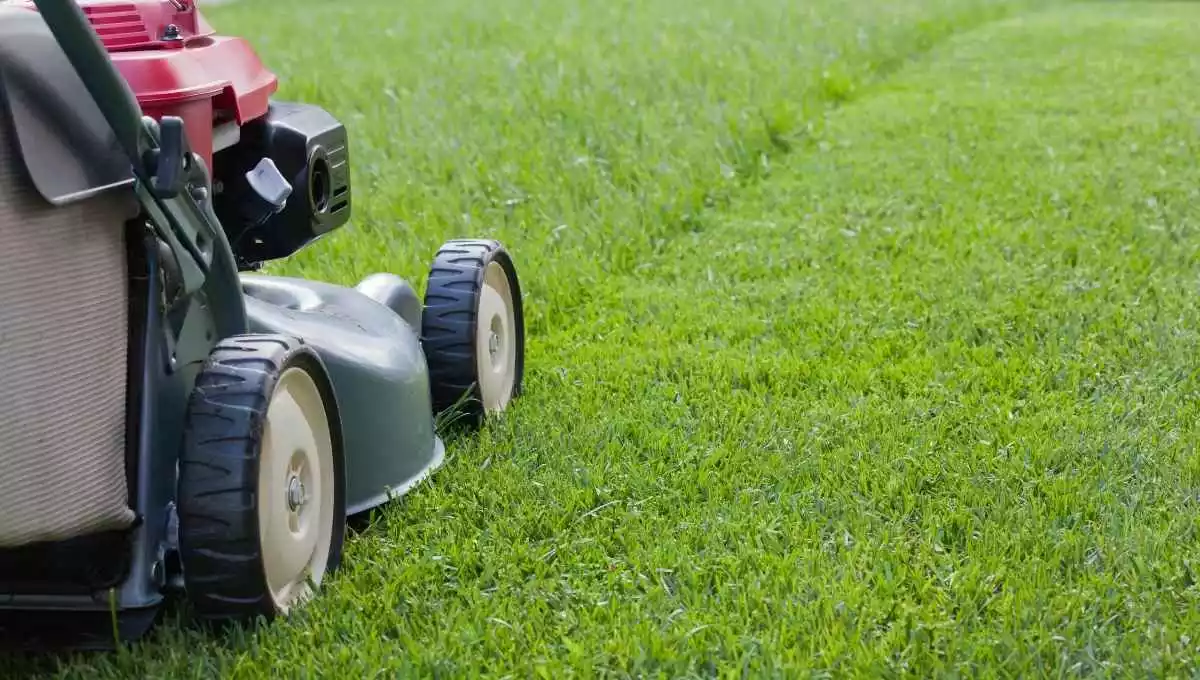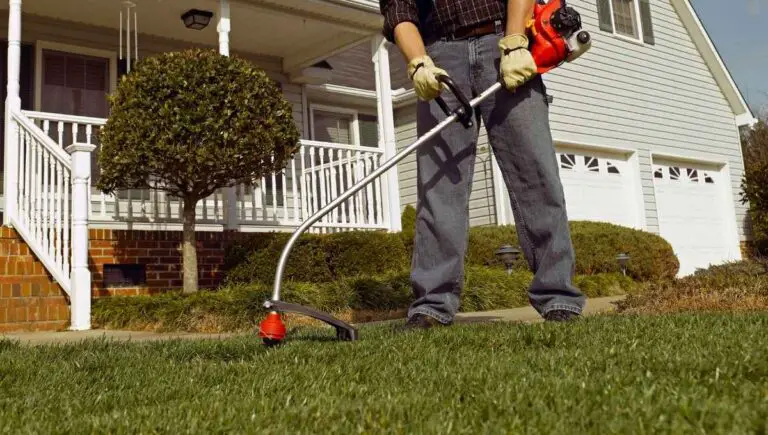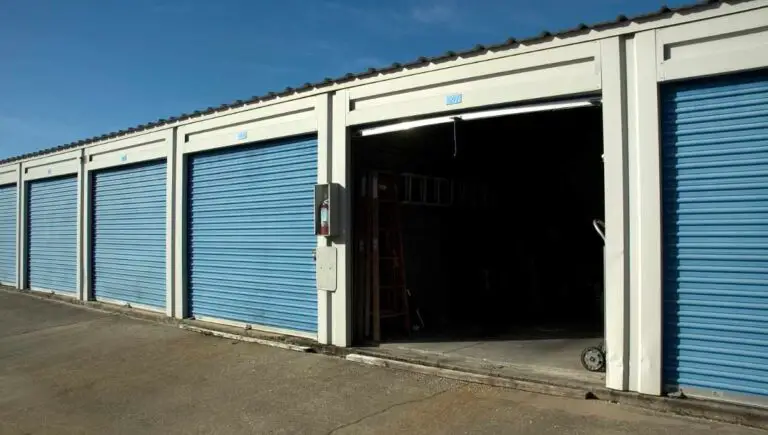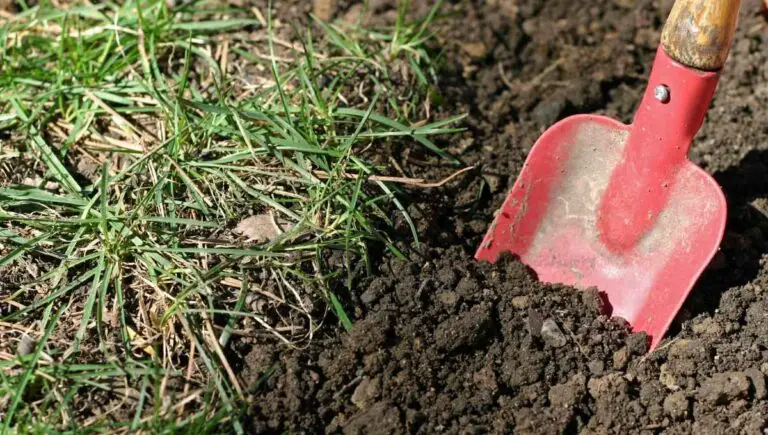How Short to Cut the Grass Before Winter? (Mow It This Low!)

It’s almost wintertime, and that means no more having to mow the grass constantly right? In preparation for these cold snowy months, you might be wondering how short to cut the grass before winter comes.
The average recommended length to cut your grass before winter would be between 2 inches and 2 1/2 inches depending on the species of your grass. This length is short enough to prevent snow mold but tall enough to avoid winter freeze burn.
Don’t make the mistake a lot of homeowners do and mow everything down. Make sure to give your lawn the proper TLC to ensure that you’ll have green and beautiful grass after the winter months are over. We’re going to show you how to do just that!
This post contains affiliate links. This means Yard Blogger may earn a commission should you make a purchase using any of our links. Please refer to our full affiliate disclosure policy for full details.
Here’s a Quick Pro Tip!
You’re going to want to use a commercial lawnmower and weed eater to cut your grass before a freeze.
These tools will make it easy to adjust the cut progressively after each mow to make sure that the grass is able to cope well during the winter.
When in doubt, you can’t go wrong with the Craftsman M105 140cc Gas Powered Push Mower and the Black & Decker Cordless Trimmer
If you want a more Eco-Friendly option, there’s the Greenworks Pro Cordless Push Lawn Mower and the Greenworks 40V 13-Inch Cordless Trimmer (all of these can be found on Amazon)
Should Grass Be Cut Short Before Winter?
Whether you like it or not, you can’t do much for your lawn due to the extreme winter weather. You have no choice but to forget about your lawnmower or string trimmer in the meantime.
Preparing your lawn while the weather is still warm will prevent winter damage to your lawn and make your grass survive even the harshest winters and make your lawn lush and gorgeous come springtime.
How Late is Too Late to Mow Your Lawn?
When to cut your grass for the last time will depend partly on the growth cycle of the kind of grass you have.
Warm-season grasses such as buffalo grass (Buchloe dactyloides) and bermudagrass (Cynodon spp.) grow during the spring or summer and become dormant during late fall.
You should do your final cut before it enters the dormant period, which should be around late October.
As for cold-season grasses such as hard fescue (Festuca longifolia) and Kentucky bluegrass (Poa pratensis), these become dormant during summer or winter, which means you should cut around late May, November, or December.
You might also enjoy our post on Can You Mow Your Lawn in the Winter or Should You Wait?
What is the Best Cutting Height for Grass?
After you’ve made your final cut of the season, the grass in your lawn should be around 2 1/2 inches long, depending on the grass variety. This is especially applicable for cool-season grass such as Kentucky bluegrass.
Bermuda and bent grass should be cut shorter, around 1 1/2 to 2 inches long. This height average will allow your lawn to optimize the photosynthesis process that will happen during winter, which will maintain its resilience.
Ideally, your grass should not be longer than 3 inches, because this may cause it to become matted or get compressed under the snow.
Grass that has been matted can develop snow mold or other types of fungus when spring comes around.
Grass that is too short will lead to problems as well. If your lawn is less than 2 inches, your grass can be forced to use more nutrients to speed up its growth and regain the missing height.
Your grass may also go into hibernation too early or get stressed to the point of dying. You don’t want these to happen to your lawn.
So how do you avoid cutting too much grass at one time?
Don’t clip more than one-third of the grass height in a single mowing. You have to condition your lawn by spreading the trims out so it can withstand the shorter height.
Is It Better to Leave Your Lawn Long or Short for Winter?
You might also enjoy our post on How To Get Dead Grass To Grow in Your Yard
You may think that leaving your grass at around 2 1/2 inches long may seem too long, especially during the fall. But you should resist the temptation to cut further in order to avoid stressing out your lawn.
On the other hand, cutting it shorter than the recommended height will also lead to stress because of the possible early hibernation.
Why Is It Important to Avoid Snow Mold?
Snow mold appears as patches of discolored grass, which can be straw-colored or matted with pinkish or white web-like coating. You will see this when the snow cover melts.
These spots usually shrink when the weather turns hot and dry, but some may still remain through summer and even fall.
Now if you prefer your lawn to look immaculate, you definitely don’t want snow mold on your grass. Nothing ruins a green spread than these unsightly patches of discolored grass.
Sidenote: Don’t forget to check out our blog post on How to Stop Icicles From Forming on Your Roof and Gutters
How Should I Mow the Lawn Properly?
If your grass is really tall during fall, you should cut it in gradual amounts. For instance, if your grass is 3 1/2 inches tall, you should do two mows in order to get this down to 2 1/2.
Also, allow several days between each mowing so your lawn has enough time to recover from stress.
What Is the Best Tool for Cutting Grass Before a Freeze?
The best tools to do the job are a lawnmower or commercial weed trimmer/commercial weed eater. These tools are low maintenance – they are lightweight, convenient, and easy to use.
It’s recommended to lower the cutting base of your string trimmer progressively each time to mow the lawn. This will allow the grass to cope well during the winter, as it’s not shocked from being trimmed all off at once.
You might also enjoy our post on How Long Does Milorganite Take to Work on a Lawn?
When Should You Stop Cutting Grass?
These seasonal signals will tell you that it’s time to put down the trimmer or mower.
- Soil temperature – warm-season grasses become dormant when soil temperature remains consistently below 55 degrees Fahrenheit.
For cool-season grasses, the temperature becomes dormant at around 45 degrees Fahrenheit.
Use online tools to keep track of your soil temperature. You can also observe grass growth, which slows down before entering the dormancy period.
You will know that grass is growing more slowly when the time between trimmings stretches from every two weeks to just once a month. - Frost – warm-season grasses go dormant after a few hard frosts. On the other hand, cool-season grasses can keep growing, so you may still need to mow.
Don’t do mowing when your lawn is covered in frost; it’s best to leave it alone in order to protect the turf crowns. - Leaves – falling leaves means cooler air is about to come. During this time, trees are usually half-bare and grass growth has slowed noticeably.
You still need to keep the leaves off your lawn even when the grass is dormant. Just mulch the mower for a convenient and easier job.
Sidenote: Don’t forget to check out our blog post on Do Snowblowers Take Regular Gas?
Are There More Reasons to Cut the Grass Short?
Long grass is more prone to developing winter fungal diseases like snow mold, which can kill your grass, therefore trimming your lawn will prevent disease.
When snow is present, longer grass is more likely to go through winter. Snow causes grass blades to fold over the plant crown, which increases the likelihood of rot and fungal disease.
Keeping the grass short also wards off voles (small rodents that are relatives of hamsters and lemmings) which can hide in your lawn. These creatures feed on healthy grass plants and roots. Shorter grass means less snow cover for the voles.
You also have to think beyond winter when it comes to the benefits of keeping your grass short. During spring, short grass greens up faster because it doesn’t shade the soil.
Sunlight gets to penetrate the soil, therefore warming it. This results in earlier growth for the grass. You also have to deal with less debris come springtime, because most leaves skip across short grass when the wind blows during the winter.
You might also enjoy our post on What to Feed Deer in Your Backyard to Keep Them Coming Back!
Is There Anything Else I Should Do to Prepare My Lawn for the Dormant Season?
Prepping your lawn before the winter involves more than just cutting grass. You should take this time to fertilize your lawn before making the final cut on your grass.
A slow release of 10-10-10 fertilizer several weeks before should do the trick. Of course, the grass will not be able to use all of the fertilizer before winter, but it will remain around the root area of the soil.
This will help boost growth for the grass when it’s time to come out of dormancy.
Prevent damage to your grass too by removing leaves, twigs, and other debris. You can also aerate your lawn to break up thatch, which will also boost grass growth.
You will see the efforts of your hard work once your grass starts to come out of dormancy.
Just remember that you should not cut the grass too soon after you’ve seen signs of new growth – this can halt root development and cause damage to the grass.
Let the grass grow until it starts to look ragged, in which you can trim it to one-third of its height.






